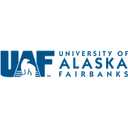This course is part of Synthetic Aperture Radar (SAR): Applications.
This comprehensive course introduces Synthetic Aperture Radar (SAR) technology and its applications in ecosystem monitoring. Students learn how SAR's all-weather capabilities and vegetation penetration enable effective monitoring of forest degradation, agricultural extent, and biomass estimation. The course combines theoretical concepts with hands-on exercises using real SAR datasets, teaching participants to access, visualize, and interpret SAR imagery for environmental monitoring applications.
Instructors:
English
English, Spanish
What you'll learn
Master SAR image interpretation for ecosystem monitoring
Apply SAR techniques to map and assess forest degradation
Use SAR data for agricultural monitoring and mapping
Implement biomass estimation techniques using SAR observations
Understand polarimetric SAR principles and applications
Skills you'll gain
This course includes:
PreRecorded video
Graded assignments, Exams
Access on Mobile, Tablet, Desktop
Limited Access access
Shareable certificate
Closed caption
Get a Completion Certificate
Share your certificate with prospective employers and your professional network on LinkedIn.
Created by
Provided by

Top companies offer this course to their employees
Top companies provide this course to enhance their employees' skills, ensuring they excel in handling complex projects and drive organizational success.





There are 4 modules in this course
The course covers fundamental principles of SAR and polarimetric SAR, focusing on practical applications in ecosystem monitoring. Topics include SAR data interpretation, forest degradation monitoring, biomass estimation techniques, and agricultural monitoring. Students learn through theoretical instruction combined with hands-on exercises using Jupyter Notebooks and real-world datasets from spaceborne SAR missions.
Contribution of SAR to Monitoring forests
Module 1
SAR for Agriculture Monitoring
Module 2
Forest Degradation / Deforestation using SAR remote sensing
Module 3
Biomass estimation using SAR
Module 4
Fee Structure
Individual course purchase is not available - to enroll in this course with a certificate, you need to purchase the complete Professional Certificate Course. For enrollment and detailed fee structure, visit the following: Synthetic Aperture Radar (SAR): Applications
Instructors

6 Courses
A Pioneering Leader in Radar Remote Sensing and Geospatial Education
Franz J. Meyer serves as Professor of Remote Sensing at the University of Alaska Fairbanks and Chief Scientist of NASA's Alaska Satellite Facility, where he has revolutionized radar remote sensing applications and education. After spending nearly two decades developing processing techniques for synthetic aperture radar (SAR) data with space agencies worldwide, he has established himself as a leading authority in radar remote sensing applications for natural hazard monitoring. His research spans surface deformation analysis, including earthquakes and volcanic eruptions, with significant contributions to ionospheric correction methods for SAR data and flood mapping using multi-temporal satellite imagery. As an educator, he has led transformative initiatives including the NASA-funded SAR Capacity Building Center at UAF, developing training materials and workshops focused on communities in Central and South America. His commitment to education earned him the prestigious IEEE Geoscience and Remote Sensing Society Education Award in 2024 for significant contributions to geoscience and remote sensing education. Known in the community as the "SAR evangelist," he has trained thousands of students globally through his edX courses in synthetic aperture radar, with nearly 8,000 students completing his three-course SAR series. His work has garnered over 4,300 citations, establishing him as a influential figure in remote sensing research and education while maintaining active collaborations with organizations in Niger, Nepal, Ecuador, Colombia, Costa Rica, India, Germany, and France.

1 Course
Research Scientist at Earth System Science Center
Africa Ixmucane Flores-Anderson serves as Research Scientist at the Earth System Science Center, University of Alabama Huntsville, where she leads SERVIR's Land Cover Land Use Change & Ecosystems initiatives. After earning her degree in agricultural engineering from the University of San Carlos, Guatemala, and master's from UAH, she has built an extraordinary career combining satellite technology with environmental protection. Her groundbreaking work includes developing lake forecasting systems to predict harmful algal blooms in Lake Atitlán, Guatemala, using artificial intelligence and satellite data. As SERVIR's lead scientist, she helps decision-makers across Latin America, Africa, and Asia address environmental challenges through Earth observation data and geospatial technologies. Her achievements earned her recognition as a National Geographic Explorer and International Changemaker in 2019, while her research spans water quality monitoring, forest change mapping, and ecosystem analysis. Currently pursuing her PhD in Natural Resource Sciences at McGill University, she continues to advance environmental monitoring through projects like the NASA-funded collaboration with SilvaCarbon, which produced a handbook on using synthetic aperture radar for forest monitoring. Her work exemplifies the power of satellite technology to protect natural resources and empower communities, particularly in regions with limited scientific infrastructure.
Testimonials
Testimonials and success stories are a testament to the quality of this program and its impact on your career and learning journey. Be the first to help others make an informed decision by sharing your review of the course.
Frequently asked questions
Below are some of the most commonly asked questions about this course. We aim to provide clear and concise answers to help you better understand the course content, structure, and any other relevant information. If you have any additional questions or if your question is not listed here, please don't hesitate to reach out to our support team for further assistance.



